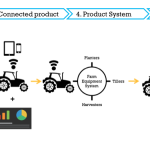
ANNICKA CAMPBELL-DOLLAGHAN
Rightpoint
DR. OMER TSIMHONI
General Motors
EDWARD GUNDLACH
General Motors
CAMILLE SHARROW-BLAUM
Rightpoint
ASHLYNN DENNY
Rightpoint
[s2If is_user_logged_in()]DOWNLOAD PDF
[/s2If]
[s2If current_user_can(access_s2member_level1)]
[/s2If]
A leading automaker needed to safely study the impact of the COVID-19 pandemic upon driver and passenger experience to effectively prioritize future in-vehicle features related to cleanliness. In this case study, we'll share our approach and retrospective learnings on how to understand, contextualize, and anticipate the impact of major societal shifts as they happen. Article citation: 2021 EPIC Proceedings pp 75–90, ISSN 1559-8918, https://www.epicpeople.org/epic
Keywords: Remote Methods, Diary Study, Automotive, COVID-19
[s2If current_user_is(subscriber)]
Become a member to access our video library. Learn More.
[/s2If]
[s2If !is_user_logged_in()]
FREE ARTICLE!
Please sign in OR create a free account to access our library—the leading collection...



